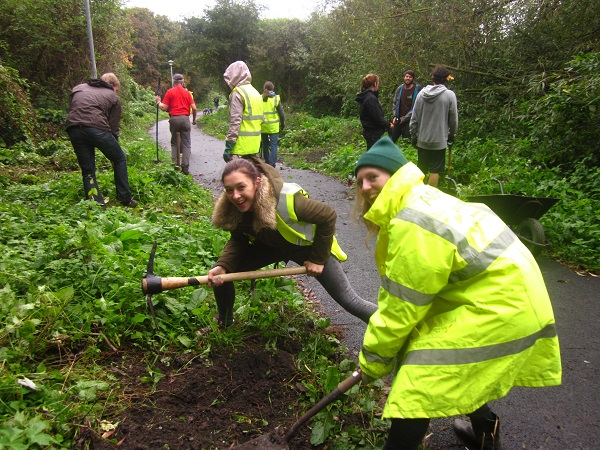1. Fostering ties: what are we concerned about?
Build community resilience through fostering community ties and collaborative working

Credit: JRF
On this page:
Introduction
Some problems are too complex for one organisation to manage on their own: Extreme weather events and climate change fall into this category, as do efforts to tackle fuel poverty and reduce carbon emissions. This section explores how collaboration can be developed across organisations and with the public, to address these issues and support local community resilience to climate change.
Working in collaboration
Collaboration can take various forms, from formal partnerships between agencies to co-production of services with the public. Less formal cooperation between different parties recognising the varying skills, roles and responsibilities and capacities each can offer, can also be important.
- Partnership working can be defined as “an agreement between two or more independent bodies to work collectively to achieve an objective1" though partnerships can vary in their resources, scale and scope of participation.
- An alternative approach, which gives more control to communities is to co-produce services: “Co-production means delivering public services in an equal and reciprocal relationship between professionals, people using services, their families and their neighbours. Where activities are co-produced in this way, both services and neighbourhoods become far more effective agents of change2.” This approach recognises the resources and skills of communities and that they can be a critical part of solutions.
There are several ways in which communities can participate in supporting actions that improve climate resilience. The National Council of Voluntary Organisation’s (NCVO) Pathways through Participation project identifies three forms of participation:
- Public participation (activities between individuals and the state, e.g. through responding to public consultations);
- Social participation (activities between individuals wholly or partly independent of the state, e.g. through community groups)
- Individual participation (activities which are independently governed, e.g. personal donations)3.
This section primarily focuses on how public services could support public participation and work collaboratively together, but recognises that fostering community ties requires recognition of the other forms of participation which may also be important for climate change responses.
Evidence shows that collaborative working is worth the time and effort required to build networks, meet and discuss ideas, listen to and understand other perspectives and language, develop shared goals and work through problems and issues which emerge as this can often lead to new ideas, new insights and new resources which would otherwise be missed.
Research carried out as part of the Climate Just project suggests that networks of organisations working with socially vulnerable groups, and networks of organisations working on issues associated with climate change and extreme weather are poorly connected and appear to operate largely independently. This has also been seen in community organisations where there is a lack of joint working between groups working on social justice, environmental and community themes4.
Nevertheless, there are opportunities for socially and environmentally focused networks to be brought together to support climate resilience at a local level. Local resilience fora are a useful network established for emergency planning while health and wellbeing boards provide an important opportunity to bring local government and health responses together. In addition there are regional branches of national organisations and agencies.
In addition regional branches of national organisations or subregional partnerships such as city regions could perform vital coordinating roles:
- They support the flow of information between national and local organisations and also help to develop and maintain local networks of organisations
- They act as knowledge brokers between different networks and organisations
- They provide a forum to consider cross boundary issues; effective management of local climate impacts may only be achieved for example through consideration of wider processes affecting whole river catchments and conurbations.
- Until recently these sorts of functions were provided by organisations like Climate UK and the regional climate change partnerships. There is now a need to look to other ways and other organisations to help to deliver these important functions.
References
- The Audit Commission, 2005. Governing Partnerships: Bridging the Accountability Gap. London: The Audit Commission.
- New Economics Foundation/ NESTA 2009. The Challenge of Co-production.
- NCVO (2011) Participation trends, facts and figures
- Johnson, V., Simms, A., Walker, P. and Ryan-Collins, J. (2010) Bridging the gap between climate change, resource scarcity and social justice. London: Carnegie UK Trust

Built by:

© 2014 - Climate Just
Contact us
